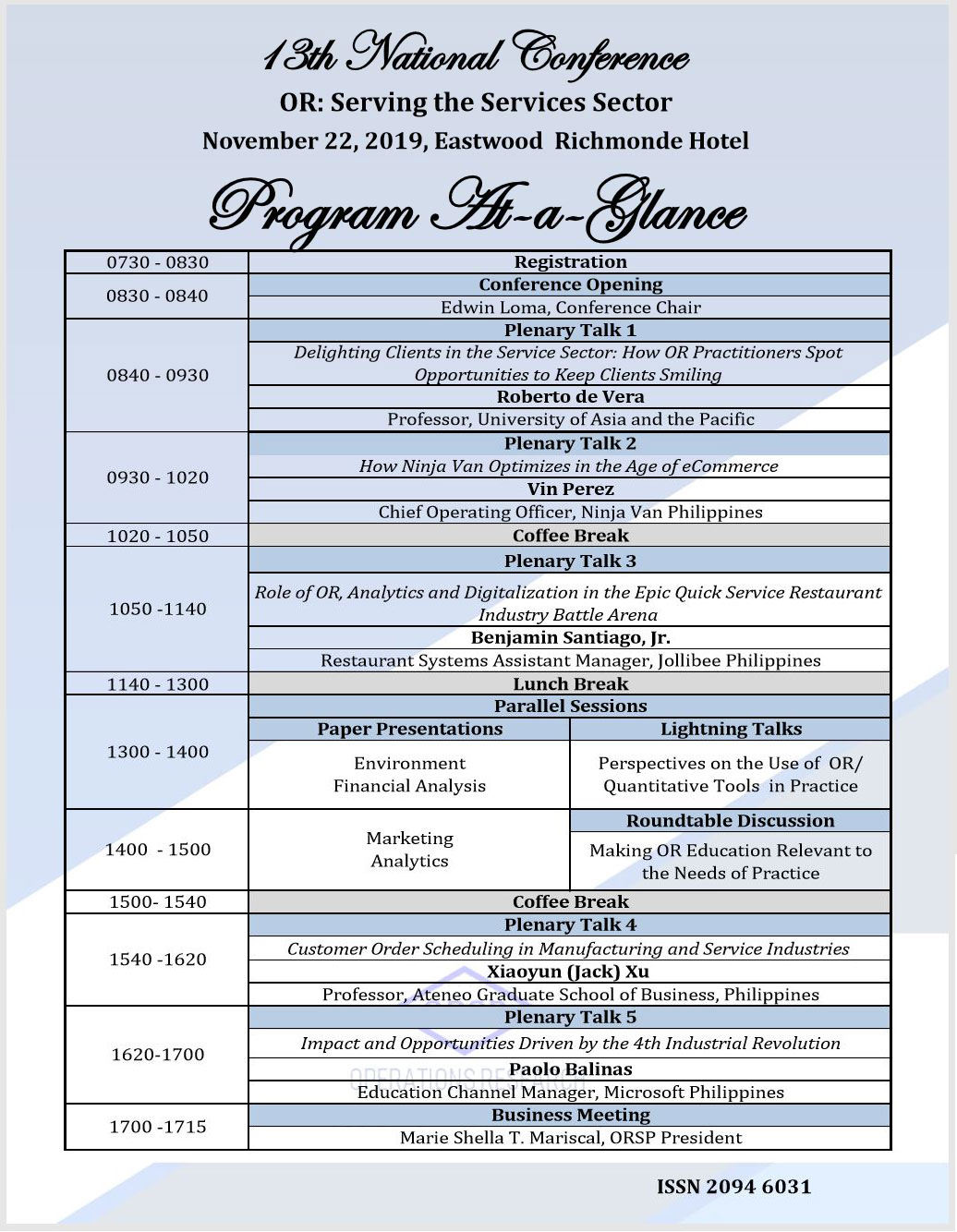
WHAT MAKES US A GREAT PLACE TO WORK
We are proud to be consistently recognized as one of the world’s best places to work, a champion of diversity and a model of social responsibility. We are currently ranked the #1 consulting firm on Glassdoor’s Best Places to Work list, and we have maintained a spot in the top four on Glassdoor’s list for the last 12 years. We believe that diversity, inclusion and collaboration is key to building extraordinary teams. We hire people with exceptional talents, abilities and potential, then create an environment where you can become the best version of yourself and thrive both professionally and personally. We are publicly recognized by external parties such as Fortune, Vault, Mogul, Working Mother, Glassdoor and the Human Rights Campaign for being a great place to work for diversity and inclusion, women, LGBTQ and parents.
WHO YOU’LL WORK WITH
This is an opportunity to be a key member of Bain’s expanding advanced analytics capability area. This position will be part of the Advanced Analytics Group (Bain’s team of advanced analytics experts). The role will involve advising on the application of optimization, planning, simulation, and forecasting to solve clients’ challenges; leading the implementation of Management Science / Operations Research techniques within the Advanced Analytics Group; and coaching client-facing consultants on implementation, interpretation, and communication of solutions. Applications will be broad and global including supply chain and logistics, inventory and resource planning, manufacturing and retail, network and service operations, and marketing and sales.
WHAT YOU’LL DO
• Apply best practice optimization, simulation, prescriptive analytics and statistical techniques to management and operations problems
• Work with Bain consultants and Advanced Analytics experts to clarify and define business objectives and identify practical value-added analytics solutions
• Translate business problems into practical solutions for optimization, simulation and statistical analysis. Develop data requirements and analytics plan to fit time, tool and budget considerations.
• Formulate mathematical optimization, statistical and/or simulation models including: establish the appropriate framework, define objectives and constraints, set constants and variables, evaluate and set assumptions, define stochastic processes, determine alternatives and decision factors.
• Implement, evaluate and validate algorithms, optimization and simulation models, and statistical processes
• Identify and communicate insights; model processes and functions; limitations and risks. Assist client-facing consultants in developing recommendations.
• Advise or build visualization and decision support tools to facilitate use of algorithms by clients in day to day and strategic decisions after Bain projects end
• Train and coach consultants on basic optimization, statistical, and simulation procedures. Assist in knowledge transfer and deployment with end-clients.
• Train and coach other AAG colleagues on skills, processes and tools required so support OR, Optimization, Simulation, and Forecasting related work
• Stay abreast of developments in the field and continue to advance Bain capabilities to serve clients. Identify trends in Data Science and Digital that will impact Bain and AAG work and help bring those perspectives to the AAG team and Practice leaders
• Communicate with and educate both senior and junior colleagues to further embed management science and operations analytics across the firm
ABOUT YOU
• Excellent oral and written communication skills
• Fluent in English. Mandarin a plus
• Strong skills in scoping, problem definition and problem solving under time constraints
• Master’s degree or higher in a related discipline such as Industrial Engineering, Operations Research, quantitative Management Science, Statistics, Mathematics, or Computer Science (or equivalent work experience)
• Familiarity with a variety of operations analytics applications including supply chain and logistics, inventory and resource planning, manufacturing and retail, network and service operations, and marketing and sales
• Expertise in Optimization techniques, languages, and experience in formulating and implementing optimization solvers, linear, integer, non-linear. Able to reformulate complex problems into more tractable solutions, including use of heuristic algorithms. Familiar with advanced optimization packages (e.g. Gurobi, CPLEX) and modelling languages (e.g., Gurobi-py, PYOMO, AMPL).
• Strong skills in data engineering (e.g. SQL, R, Python)
• Familiarity with dynamic, discrete event, and stochastic simulation methods and languages
• Must thrive in a fast paced environment and be able to work independently
• Up to 50% travel required
• Location: Manila
Ideal candidates will also have experience in:
• Expertise in statistical modelling, data science and machine learning applications.
• Experience in risk modelling and building decision support tools
• Strong skills in multi-dimensional modelling and enterprise, ERP/MRP databases, e.g. Hyperion, Oracle, SAP, EPC, etc.
• Experience with advanced simulation modelling and tools. May include Excel-based modelling applications and simulation/solver add-in solutions, e.g. Oracle Crystal Ball and Optquest, Lindo What’s Best, or Frontline Solvers (optional). May include simulation/optimization tools and languages eg. SAS/OR, Lindo, AIMMS, AnyLogic. Optional experience with application specific software e.g. Llamasoft (supply chain) or Terralign (Sales Territory)
ABOUT US
Bain & Company is a global consultancy that helps the world’s most ambitious change makers define the future.
Across 59 offices in 37 countries, we work alongside our clients as one team with a shared ambition to achieve extraordinary results, outperform the competition and redefine industries. We complement our tailored, integrated expertise with a vibrant ecosystem of digital innovators to deliver better, faster and more enduring outcomes. Our 10-year commitment to invest over $1 billion in pro bono services brings our talent, expertise and insight to organizations tackling today’s urgent challenges in education, racial equity and social justice, economic development and the environment. Since our founding in 1973, we have measured our success by the success of our clients, and we proudly maintain the highest level of client advocacy in the industry.
Those interested may follow the link below.
Linkedin: https://www.linkedin.com/jobs/view/2427441364/
Direct Bain: https://social.icims.com/viewjob/pl1615852536496bff51
 The International Federation of Operational Research Societies (IFORS) to which the ORSP belongs announced the launching of the IFORS Fellows Award last January 15, 2021. Elise del Rosario of ORSP was included in the first set of awardees. According to the award letter issued by IFORS President Grazia Speranza, the award is a recognition of her “dedicated efforts over the years to help IFORS promote the development of OR worldwide, both in methodology and practice and to link member societies together.
The International Federation of Operational Research Societies (IFORS) to which the ORSP belongs announced the launching of the IFORS Fellows Award last January 15, 2021. Elise del Rosario of ORSP was included in the first set of awardees. According to the award letter issued by IFORS President Grazia Speranza, the award is a recognition of her “dedicated efforts over the years to help IFORS promote the development of OR worldwide, both in methodology and practice and to link member societies together. 

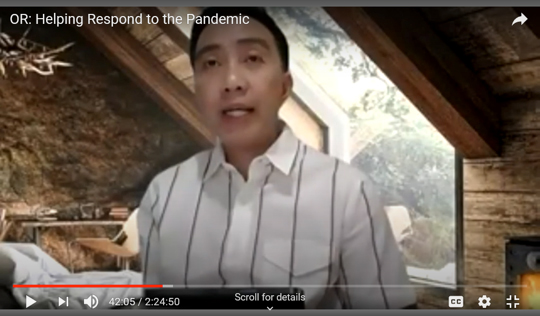 Their paper on An Optimization Approach to the Allocation of Covid-19 Vaccines tries to address how to allocate a limited amount of vaccines specially in the initial roll out that will minimize reinfection rates. She discussed how initially, an LP model to do this was developed that minimizes the sum of fatality rates among the various age groups. The output, however, showed that reinfection rates did not improve appreciably with this approach. They developed a second model that minimizes reinfection rates with the use of eigenvalues. This resulted in a nonlinear programming model which minimizes the reproduction rate of the virus. The reproduction rate represents the expected number of secondary infections generated by an infectious individual. As designed, the model could handle multiple vaccines with different levels of efficacy. A hypothetical case study illustrates the computational capability of the model. Furthermore, the group of Dr. Tapia has developed a Python-based software to aid in model deployment.
Their paper on An Optimization Approach to the Allocation of Covid-19 Vaccines tries to address how to allocate a limited amount of vaccines specially in the initial roll out that will minimize reinfection rates. She discussed how initially, an LP model to do this was developed that minimizes the sum of fatality rates among the various age groups. The output, however, showed that reinfection rates did not improve appreciably with this approach. They developed a second model that minimizes reinfection rates with the use of eigenvalues. This resulted in a nonlinear programming model which minimizes the reproduction rate of the virus. The reproduction rate represents the expected number of secondary infections generated by an infectious individual. As designed, the model could handle multiple vaccines with different levels of efficacy. A hypothetical case study illustrates the computational capability of the model. Furthermore, the group of Dr. Tapia has developed a Python-based software to aid in model deployment.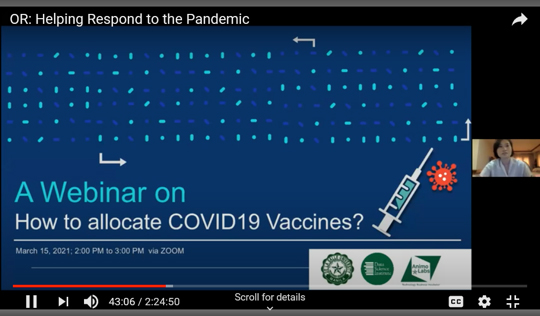 The series of questions posed by the audience moderated by D. Cruz showed the high level of audience interest in the research and suggestions on possible improvements with the use of actual data were mentioned.
The series of questions posed by the audience moderated by D. Cruz showed the high level of audience interest in the research and suggestions on possible improvements with the use of actual data were mentioned.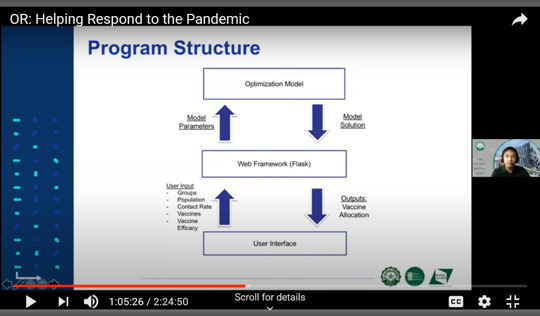 The second speaker was introduced by ORSP Board member Nestley Sore – Vic Reventar is himself an ORSP Board member and a Lecturer at the Department of Quantitative Methods and Information Technology Department at the John Gokongwei School of Management at the Ateneo de Manila University who has done extensive consulting work in various areas of Operations Research, one of which concerns his talk, the COVID 19 and its Effects on Supply Chains in the Philippines.
The second speaker was introduced by ORSP Board member Nestley Sore – Vic Reventar is himself an ORSP Board member and a Lecturer at the Department of Quantitative Methods and Information Technology Department at the John Gokongwei School of Management at the Ateneo de Manila University who has done extensive consulting work in various areas of Operations Research, one of which concerns his talk, the COVID 19 and its Effects on Supply Chains in the Philippines. The immediate Philippine government measure to mitigate the pandemic, Enhanced Community Quarantine (ECQ), limited the mobility of people and minimized “contact-rate” through social distancing. These resulted not only in income reduction for most employees but also unintended effects on the manufacturing and agricultural sectors and their distribution systems. These consequences were fully visualized in the system dynamics and agent-based modeling simulation models of the Covid 19 and supply chain presented by the speaker.
The immediate Philippine government measure to mitigate the pandemic, Enhanced Community Quarantine (ECQ), limited the mobility of people and minimized “contact-rate” through social distancing. These resulted not only in income reduction for most employees but also unintended effects on the manufacturing and agricultural sectors and their distribution systems. These consequences were fully visualized in the system dynamics and agent-based modeling simulation models of the Covid 19 and supply chain presented by the speaker.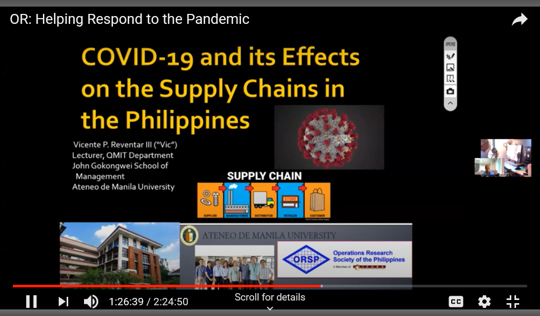

 Charlle Sy
Charlle Sy Vicente Reventar
Vicente Reventar
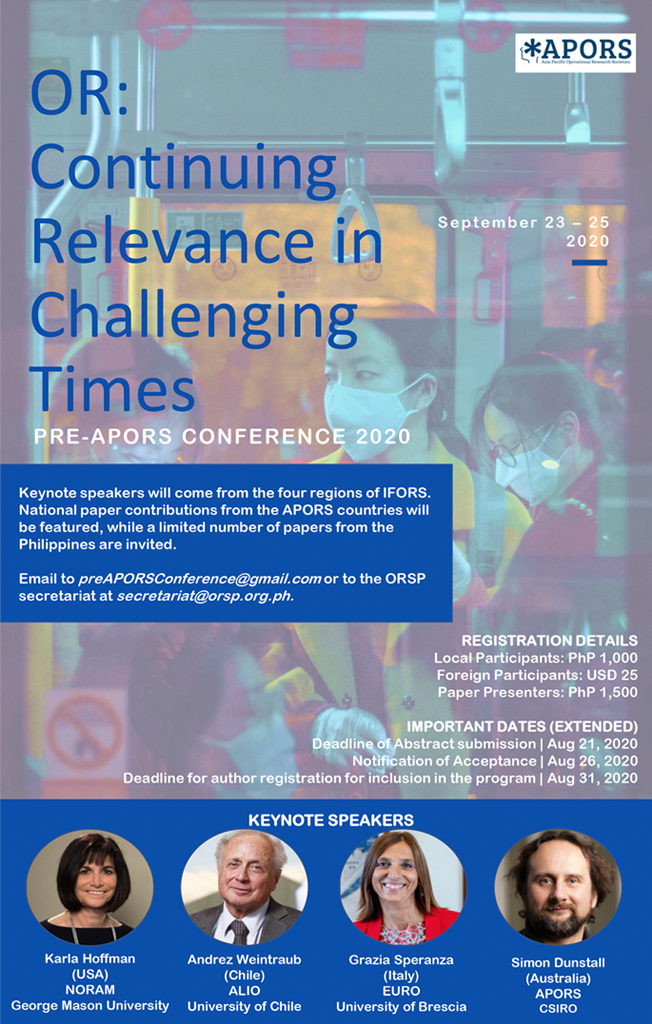

 Roberto de Vera
Roberto de Vera Vin Perez
Vin Perez Benjamin Santiago, Jr.
Benjamin Santiago, Jr. Xiaoyun (Jack) Xu
Xiaoyun (Jack) Xu

